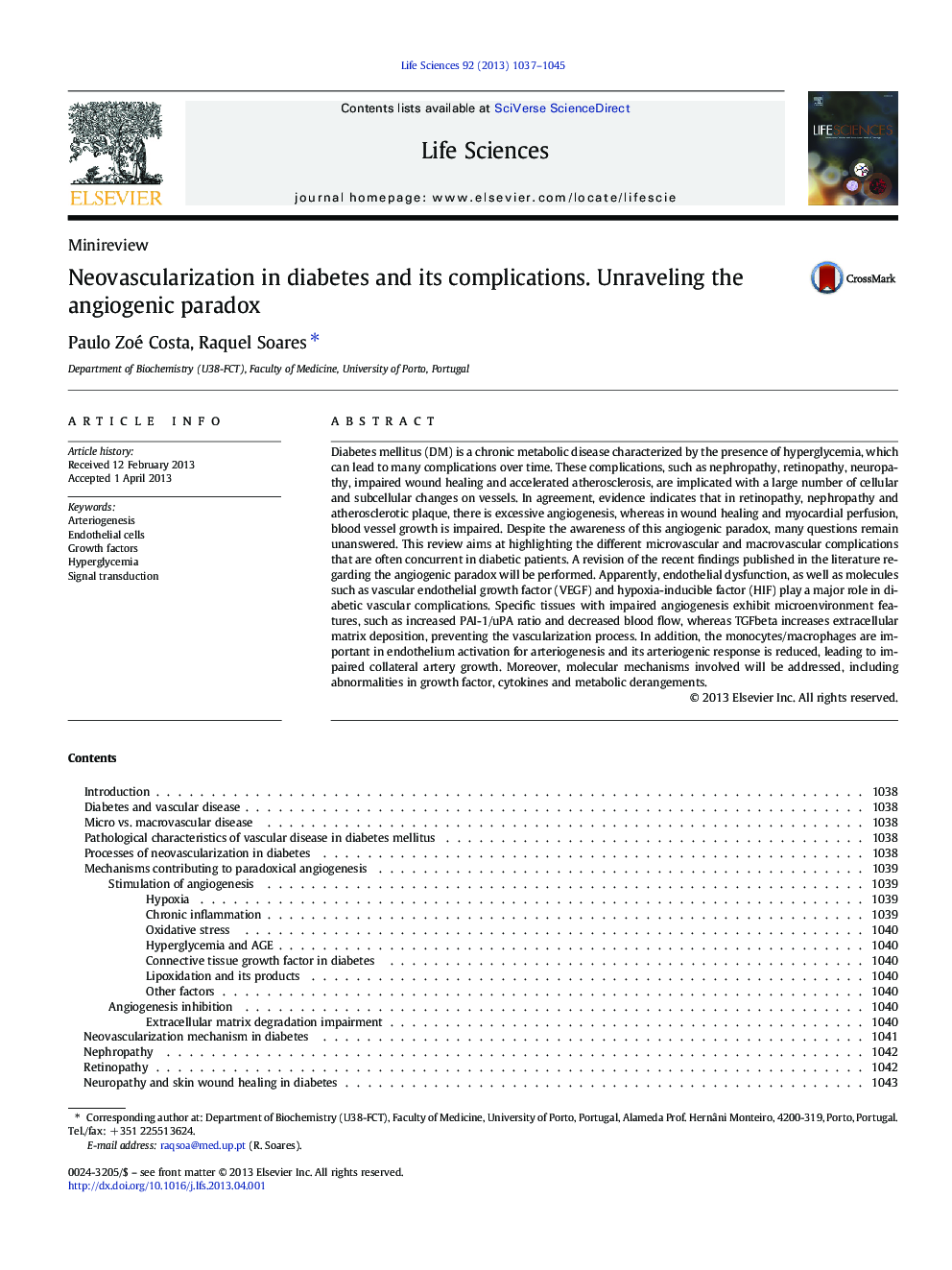| Article ID | Journal | Published Year | Pages | File Type |
|---|---|---|---|---|
| 2551478 | Life Sciences | 2013 | 9 Pages |
Diabetes mellitus (DM) is a chronic metabolic disease characterized by the presence of hyperglycemia, which can lead to many complications over time. These complications, such as nephropathy, retinopathy, neuropathy, impaired wound healing and accelerated atherosclerosis, are implicated with a large number of cellular and subcellular changes on vessels. In agreement, evidence indicates that in retinopathy, nephropathy and atherosclerotic plaque, there is excessive angiogenesis, whereas in wound healing and myocardial perfusion, blood vessel growth is impaired. Despite the awareness of this angiogenic paradox, many questions remain unanswered. This review aims at highlighting the different microvascular and macrovascular complications that are often concurrent in diabetic patients. A revision of the recent findings published in the literature regarding the angiogenic paradox will be performed. Apparently, endothelial dysfunction, as well as molecules such as vascular endothelial growth factor (VEGF) and hypoxia-inducible factor (HIF) play a major role in diabetic vascular complications. Specific tissues with impaired angiogenesis exhibit microenvironment features, such as increased PAI-1/uPA ratio and decreased blood flow, whereas TGFbeta increases extracellular matrix deposition, preventing the vascularization process. In addition, the monocytes/macrophages are important in endothelium activation for arteriogenesis and its arteriogenic response is reduced, leading to impaired collateral artery growth. Moreover, molecular mechanisms involved will be addressed, including abnormalities in growth factor, cytokines and metabolic derangements.
Graphical abstractFigure optionsDownload full-size imageDownload high-quality image (114 K)Download as PowerPoint slide
